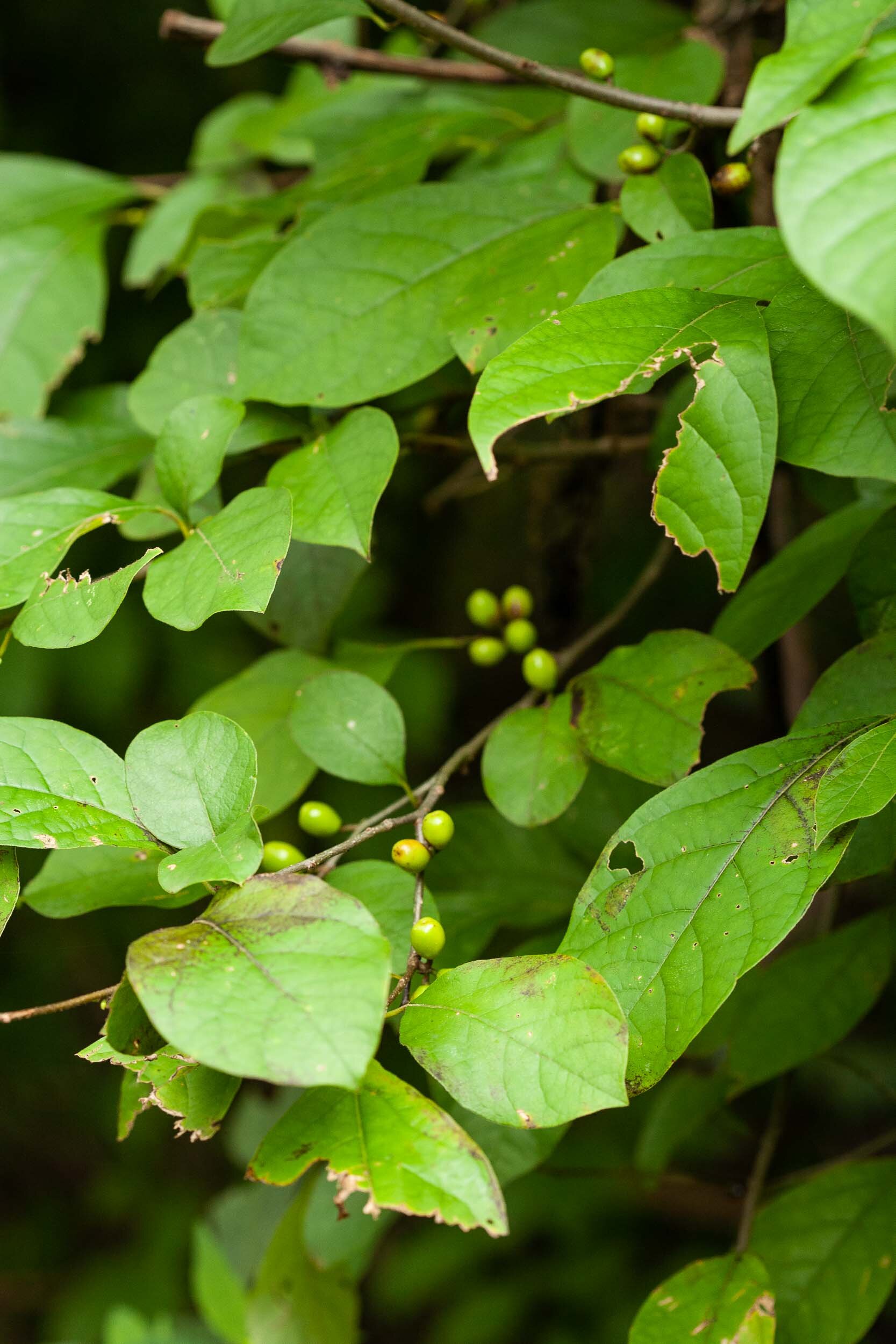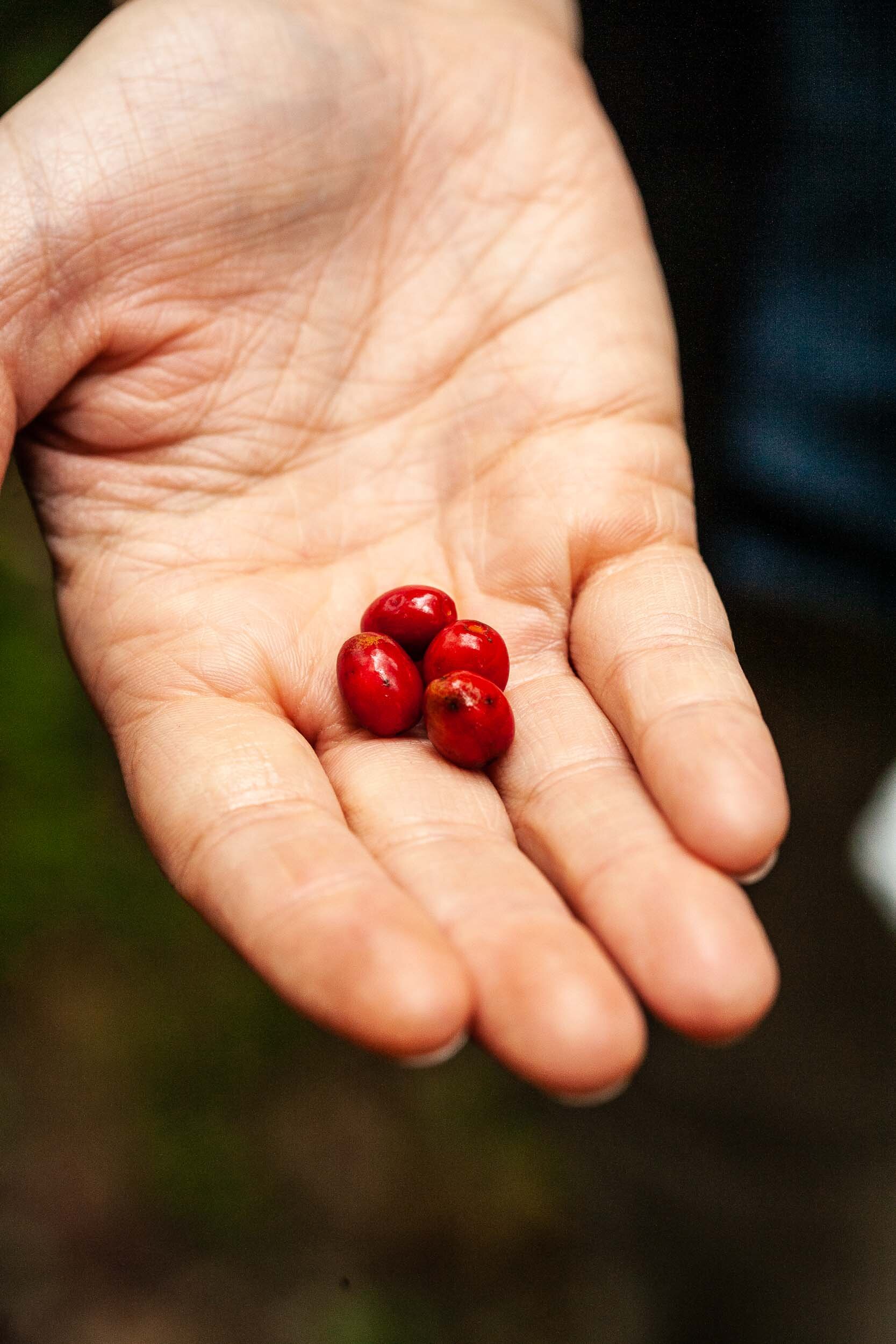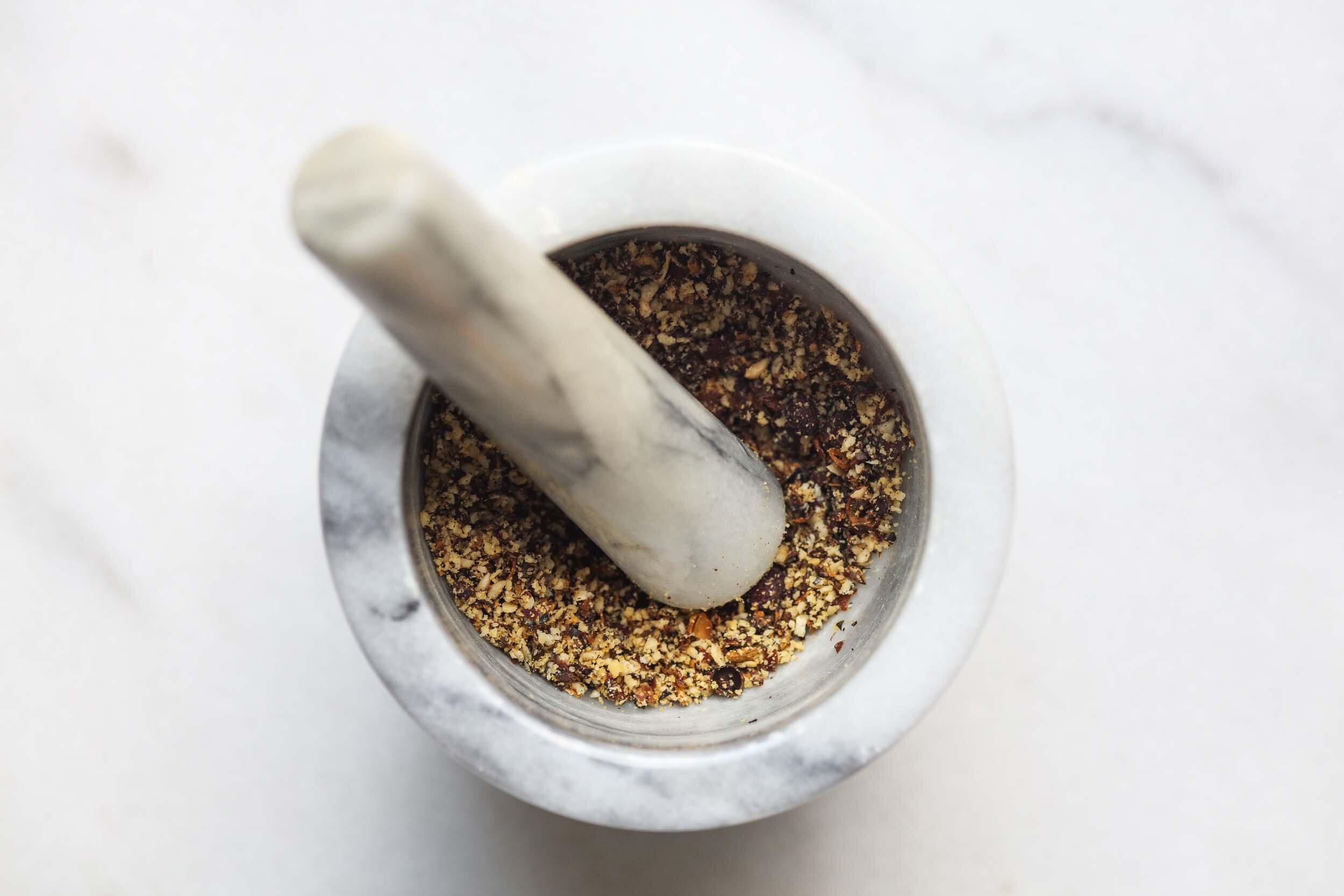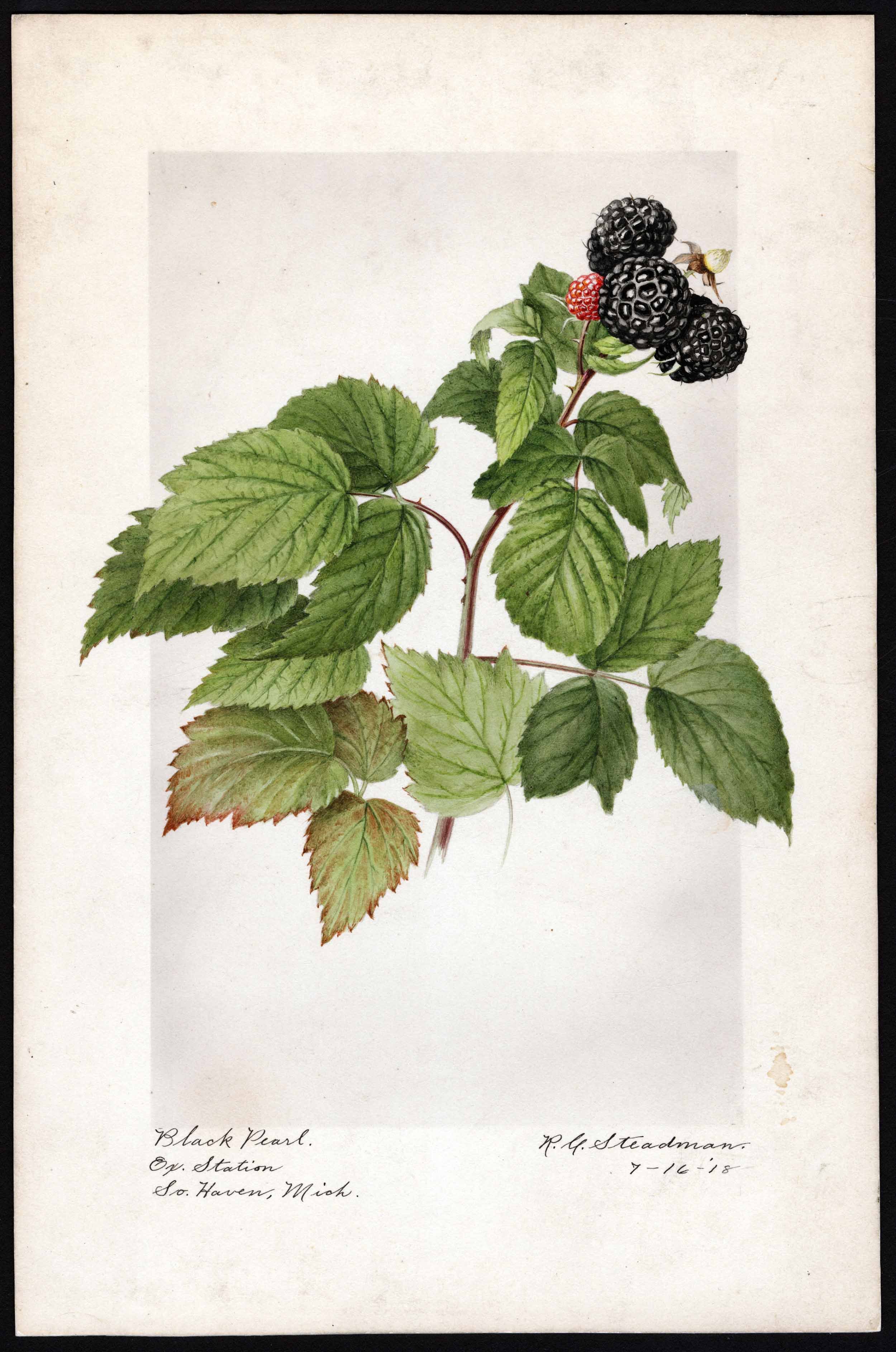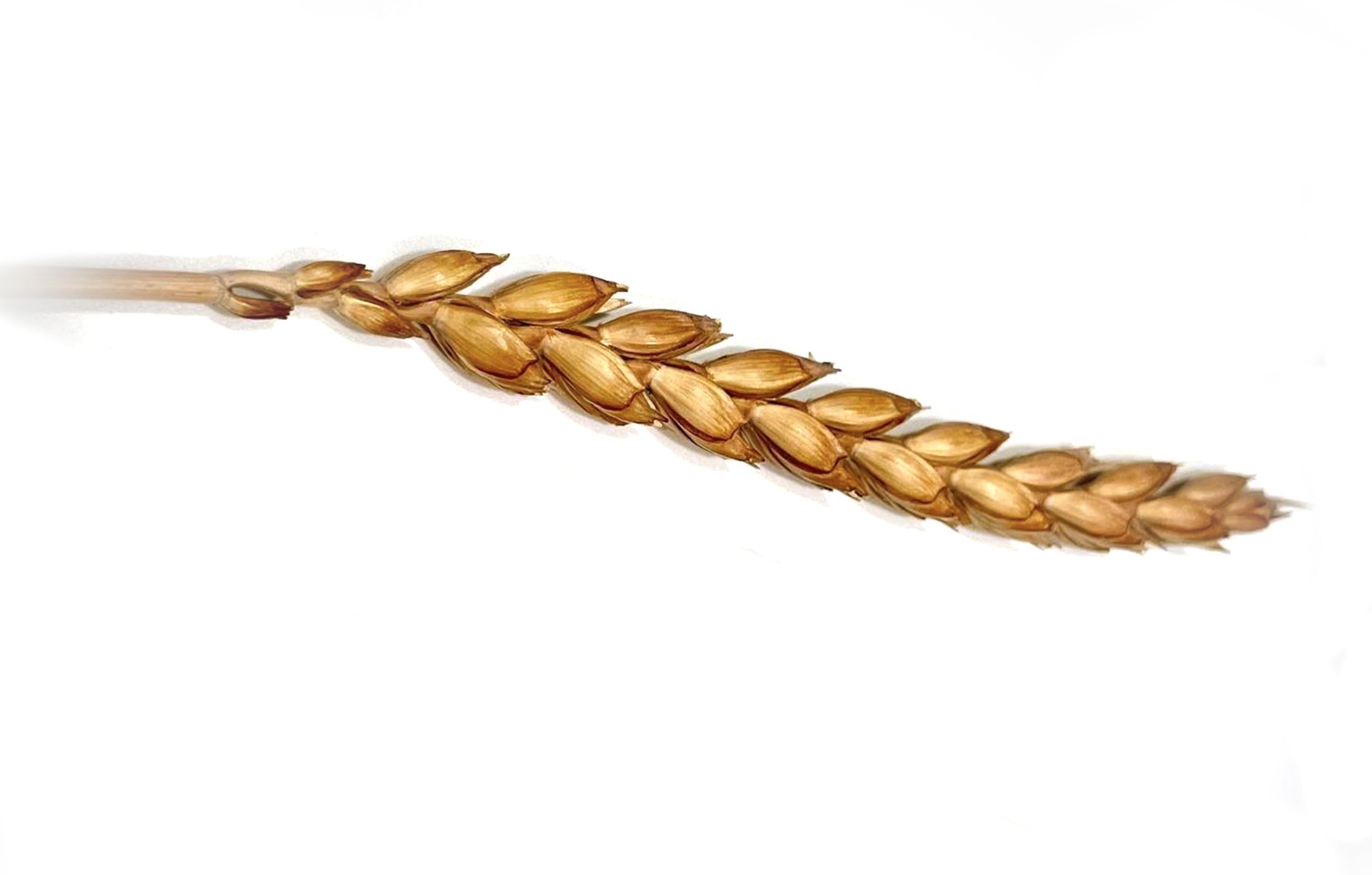Spice World
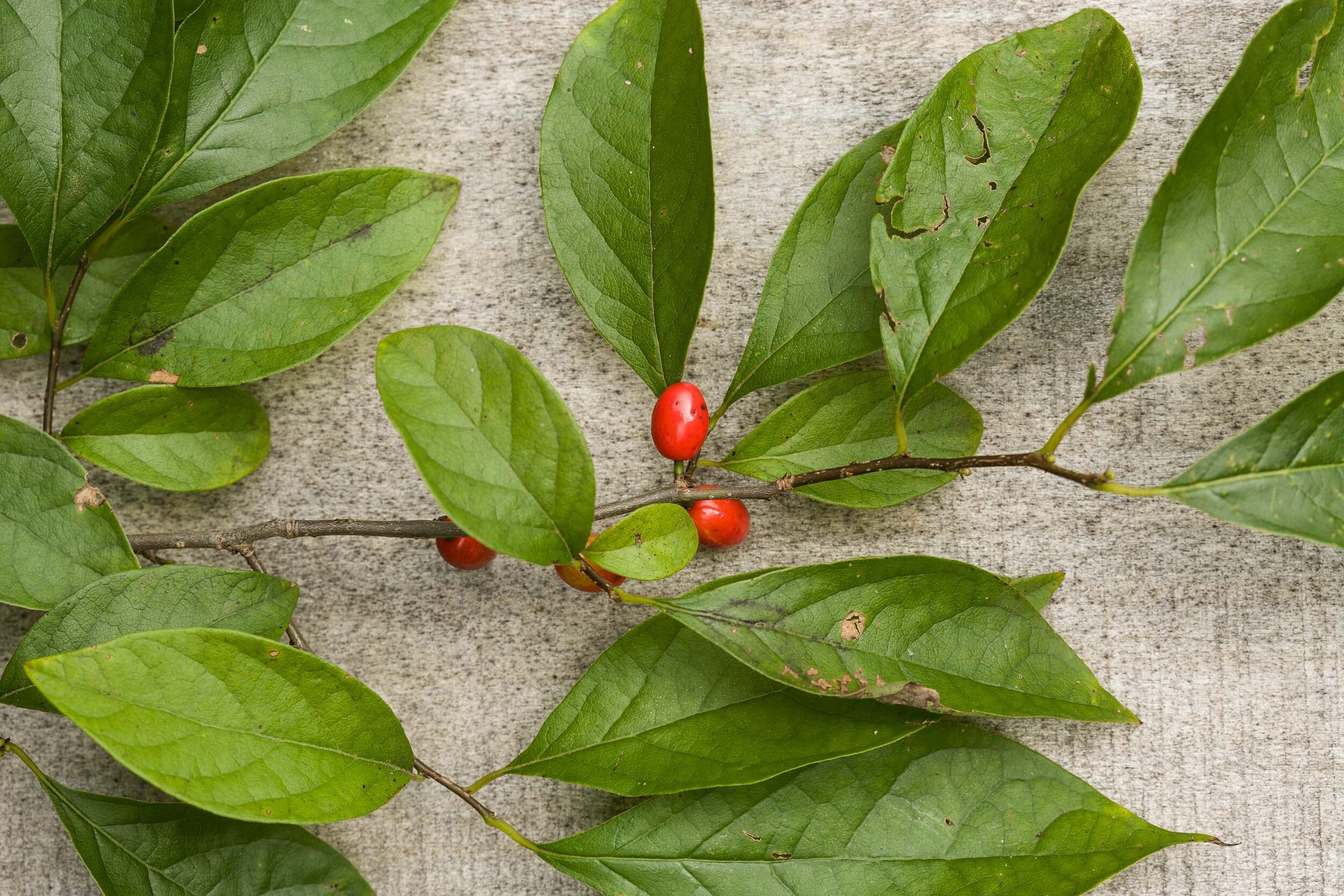
Complex and distinctive, spicebush is the unknown seasoning growing right under your nose.
Photos by Julie Kramer
Even a run-of-the-mill spice rack boasts specimens from lands far away: Vietnamese cinnamon, Indonesian nutmeg, Madagascar vanilla, cumin from India. Spices were a driver of global trade as far back as global trade existed.
We don’t need caravans, wealth, and power to enjoy affordable spices from faraway lands. All it takes now is a trip to Kroger or a click on Amazon. Yet in our upside-down times, the most foreign spice might be the one growing closest to you.
Naturally, it’s called spicebush. It’s free, though you have to know where to find it and what you’re looking for in the first place. It recalls spices you’ve had before—but it’s mostly like no spice you’ve ever encountered.
Spicebush lets you throw convention out the window and embrace a totally new flavor: sharp, resinous, and bracing. It’s an invitation to enter a realm of cooking without the yoke of tradition where you can simply wing it.
A Spicy Native
Geographically speaking, spicebush is our spice. The modest shrub (Lindera benzoin), a member of the laurel family, is native to North America and very much at home in deciduous woodlands of the Ohio River Valley. You’ve likely passed it dozens of times without knowing it offers aromatic seasoning ingredients in triplicate: its berries, twigs, and leaves are all edible, each with its own personality. If you’re curious about foraging but don’t have much know-how or time to tromp around in the woods, spicebush offers big payoffs with little effort.
Right when summer begins pivoting to fall, spicebush shrubs are decked out in tiny berries the color of the reddest lipstick imaginable. These fruits are not the type you gobble by the handful; rather, you can collect just a tablespoon and have enough to play around with for a few recipes. The spicebush’s reward is its flavor, yes, but so is its mystery and potential. The ground, dried berries have sharp notes of citrus zest, pine resin, and fruity black pepper. The more I use it, the more I love it.
Where to Forage
You’ll spy spicebush growing on tree-lined roadsides and shady, richly forested hiking trails aplenty. Spicebush has an encouraging habit of growing in cahoots with other interesting wild edibles: pawpaw trees, wood nettles, chickweed. It can be a gateway forageable, since it’s easy to identify with relative confidence.
The ripe red berries are glossy, slightly oblong, and likely no larger than the tip of your pinkie. Crush one with your fingers and you should detect a slightly greasy resin, as well as a burst of a citrusy aroma. Tear and rub the leaves and you’ll be rewarded with a more muted, lemongrass-tinged version.
Lookalike berries dot the woods (dogwood and holly come to mind), but after examining the leaves and smelling a freshly smooshed berry you should know off the bat if you’re dealing with the real spicebush or a red imitator. And as with any wild edibles, if you harbor any doubts on your plant identification, the safest thing is to hold off.
Birds and woodland mammals eat the oil-rich berries, so when you harvest them, leave plenty for wildlife to enjoy. There’s no need to be greedy, as a small handful will fuel many kitchen adventures.
While you can use the berries fresh, their flavor intensifies greatly when you dry them. You don’t need any special equipment: Simply spread them out on a tray and in about three days they’ll darken and shrivel up. Keep them in a cool, dark place for at least a year.
I store the berries whole, grinding them as needed to cook with. A mortar and pestle works, but as the berries are not rigid, you can easily whack them with the flat of your knife against a cutting board and chop them finely.
Leaves and Twigs
Early fall may be when it’s best to gather ripe spicebush berries, but the shrubs are easiest to identify in the spring, when they produce delicate yellow flowers on their stems. When the woods are still awash in a brown and gray palette, blooming spicebush is hard to mistake for anything else.
The best time to play around with twigs and leaves is when the shrubs send out new leaves late in the spring and the plant is full of newfound vitality after a long winter. The smooth, tapered leaves grow alternately on the stem and have an herby, lemongrass aroma when you rub them between your fingers.
While I’ve not figured out how to capture their essence in any cooking applications—the fresh leaves are too sturdy to chop and use as herbs and they don’t add much to liquid infusions—it’s better to dry the leaves for tea. Since spicebush leaf on its own is pleasant but plain, I like to blend it with dried spearmint or peppermint leaves for a gently bracing brew.
As for the more pliable twigs, you can steep them to add a mild lemongrass vibe to liquids (spicebush panna cotta, anyone?). A more visually striking use is to skewer shrimp or small cubes of rich, fatty meats on sturdier twigs stripped of their leaves.
Spicebush meshes naturally with warming spices, such as cinnamon and nutmeg, that often land in autumn desserts. Yet I reach for my jar of dried spicebush berries when I want my cooking to be a little subversive. Fortunately, it works well as a partner to other spices rather than as a featured player. Its inclusion in a spice mix edges anything with a bold taste closer to the kind of complexity that makes you pause a bit and think, “What is that?”
Here are some of my favorite spicebush preparations:
Add 5 or 6 lightly crushed berries to teas or ferments to drink cold: hibiscus tea, beet kvass, sun tea.
Make a highly unorthodox Chinese five-spice with spicebush instead of Szechuan or black peppercorns, then use it in everything from persimmon pound cake to pawpaw ketchup.
Slip a teaspoon or so of crushed berries in a jar of fermented cucumbers.
Include whole spicebush berries in pickling spice.
Work ground spicebush berries into a batch of classic white cabbage sauerkraut, or a purple kraut of red cabbage and beet laced with cloves of garlic.
Make rubs for rich and assertive meats such as lamb, duck, or beef using ground spicebush, black pepper, lemon zest, ground sumac, and garlic.
You might detect a theme here: There are no rules. What spicebush does best is up to you. Mess around with it and see how it delights you, or doesn’t.
What is delightful beyond flavor is how spicebush belongs to us, because we belong here. Untold generations of fauna and humans came and went and spicebush grew all the while, feeding and soothing them. You don’t even have to harvest it for it to soothe you. Just go find some and consider what it means to live in a world of abundance from elsewhere and be able to tap into a little abundance right where you are.
caption 1:
Sara Bir is a chef, writer, and plant nerd whose 2018 book, The Fruit Forager’s Companion, received IACP’s Reference and Technical Cookbook Award. Her latest book, The Pocket Pawpaw Cookbook, is out this fall; she’s also an editor for the website SimplyRecipes.com. She enjoys plantspotting around her neighborhood in Marietta, OH.

